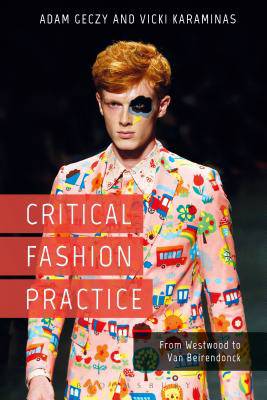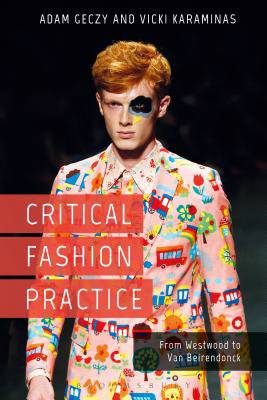
- Afhalen na 1 uur in een winkel met voorraad
- Gratis thuislevering in België vanaf € 30
- Ruim aanbod met 7 miljoen producten
- Afhalen na 1 uur in een winkel met voorraad
- Gratis thuislevering in België vanaf € 30
- Ruim aanbod met 7 miljoen producten
Zoeken
Critical Fashion Practice
From Westwood to Van Beirendonck
Adam Geczy, Vicki Karaminas
Hardcover | Engels
€ 203,95
+ 407 punten
Omschrijving
There is a new form of design practice within the contemporary fashion industry which is active in complex forms of social commentary and critique. While fashion in the modernist era has shown signs of criticism and subversion, these were either in the form of subcultures or perversions, such as punk or BDSM styling. Today, however, these genres have been absorbed into the fashion industry itself, meaning that "critical fashion+? is now far from limited to the subcultures from which it came. This book explores this new space for criticism within the popular fashion sphere to demonstrate how designers are disrupting conventions, challenging beliefs and stirring change from within the system itself.
Critical Fashion Practice considers a range of contemporary designers across the globe, from the US to Japan, whose conceptual designs embody this critical language, including case studies such as Rei Kawakubo's deconstructive silhouettes for Comme des Garçons and Walter Van Beirendonck's sadomasochistic menswear collections, amongst other key players such as Miuccia Prada, Vivienne Westwood and Viktor & Rolf. Arguing that the rise of critical fashion coincides with a noticeable decline in the criticality of art, Geczy and Karaminas go beyond slotting fashion into previously established art theories. Conceiving a new cultural role for fashion that affords insight into identity, class, race, sexuality and gender, this book shows how fashion can not only reflect and comment on, but can also be a part of social change.
Critical Fashion Practice considers a range of contemporary designers across the globe, from the US to Japan, whose conceptual designs embody this critical language, including case studies such as Rei Kawakubo's deconstructive silhouettes for Comme des Garçons and Walter Van Beirendonck's sadomasochistic menswear collections, amongst other key players such as Miuccia Prada, Vivienne Westwood and Viktor & Rolf. Arguing that the rise of critical fashion coincides with a noticeable decline in the criticality of art, Geczy and Karaminas go beyond slotting fashion into previously established art theories. Conceiving a new cultural role for fashion that affords insight into identity, class, race, sexuality and gender, this book shows how fashion can not only reflect and comment on, but can also be a part of social change.
Specificaties
Betrokkenen
- Auteur(s):
- Uitgeverij:
Inhoud
- Aantal bladzijden:
- 232
- Taal:
- Engels
Eigenschappen
- Productcode (EAN):
- 9781474265539
- Verschijningsdatum:
- 9/02/2017
- Uitvoering:
- Hardcover
- Formaat:
- Genaaid
- Afmetingen:
- 157 mm x 236 mm
- Gewicht:
- 566 g

Alleen bij Standaard Boekhandel
+ 407 punten op je klantenkaart van Standaard Boekhandel
Beoordelingen
We publiceren alleen reviews die voldoen aan de voorwaarden voor reviews. Bekijk onze voorwaarden voor reviews.








